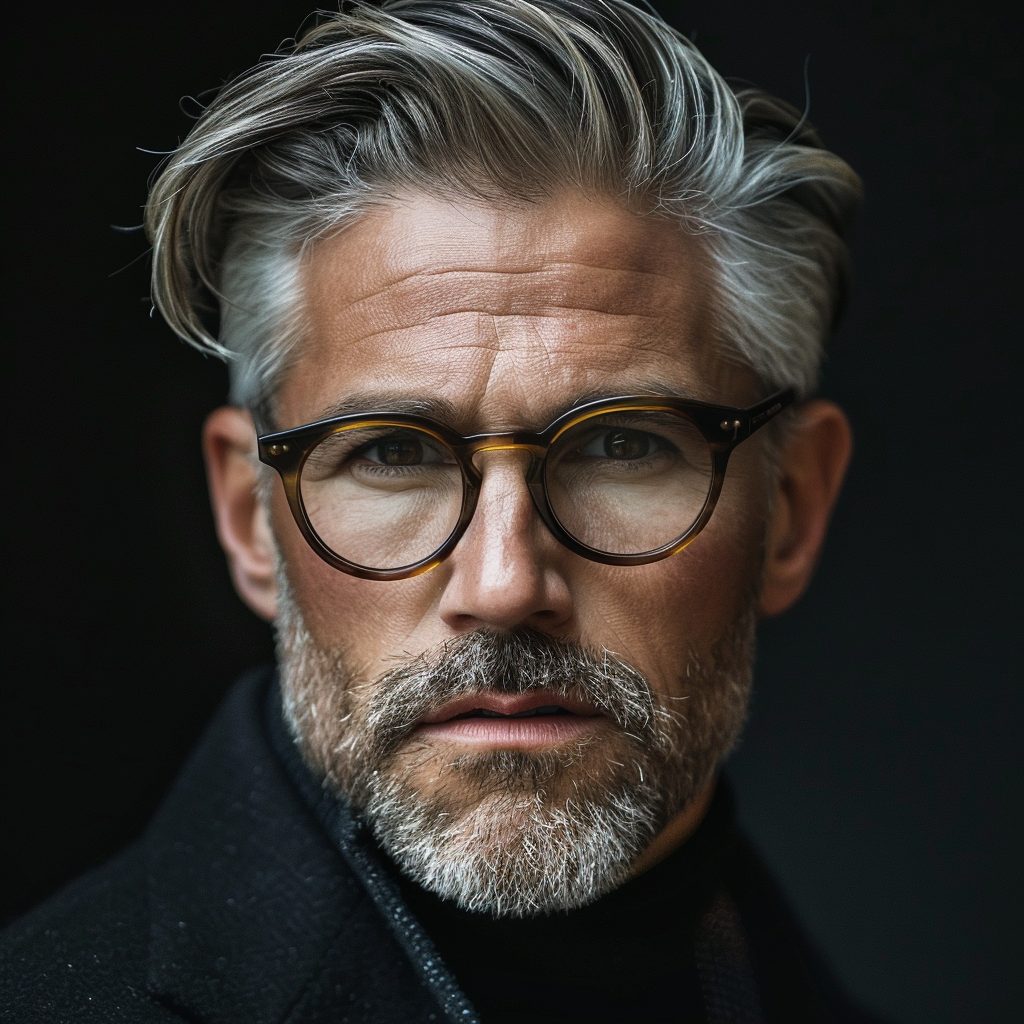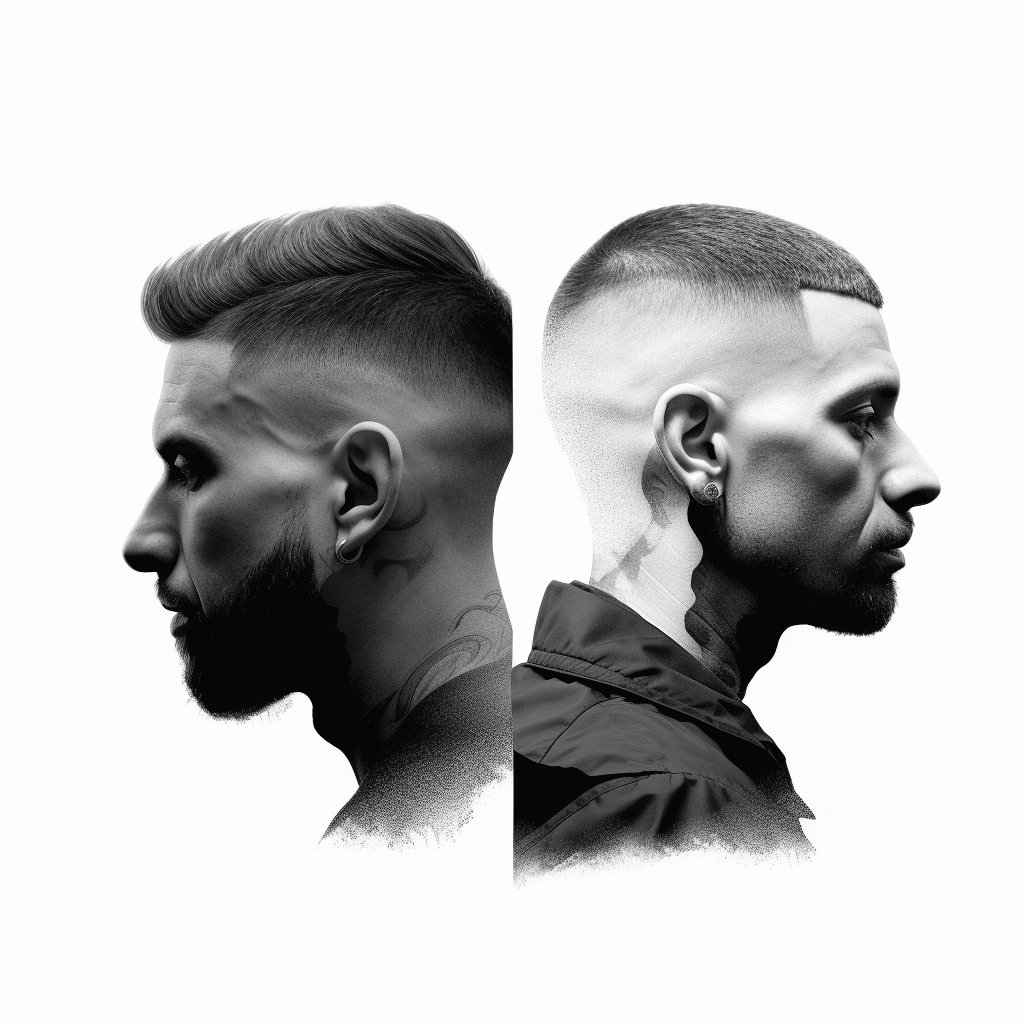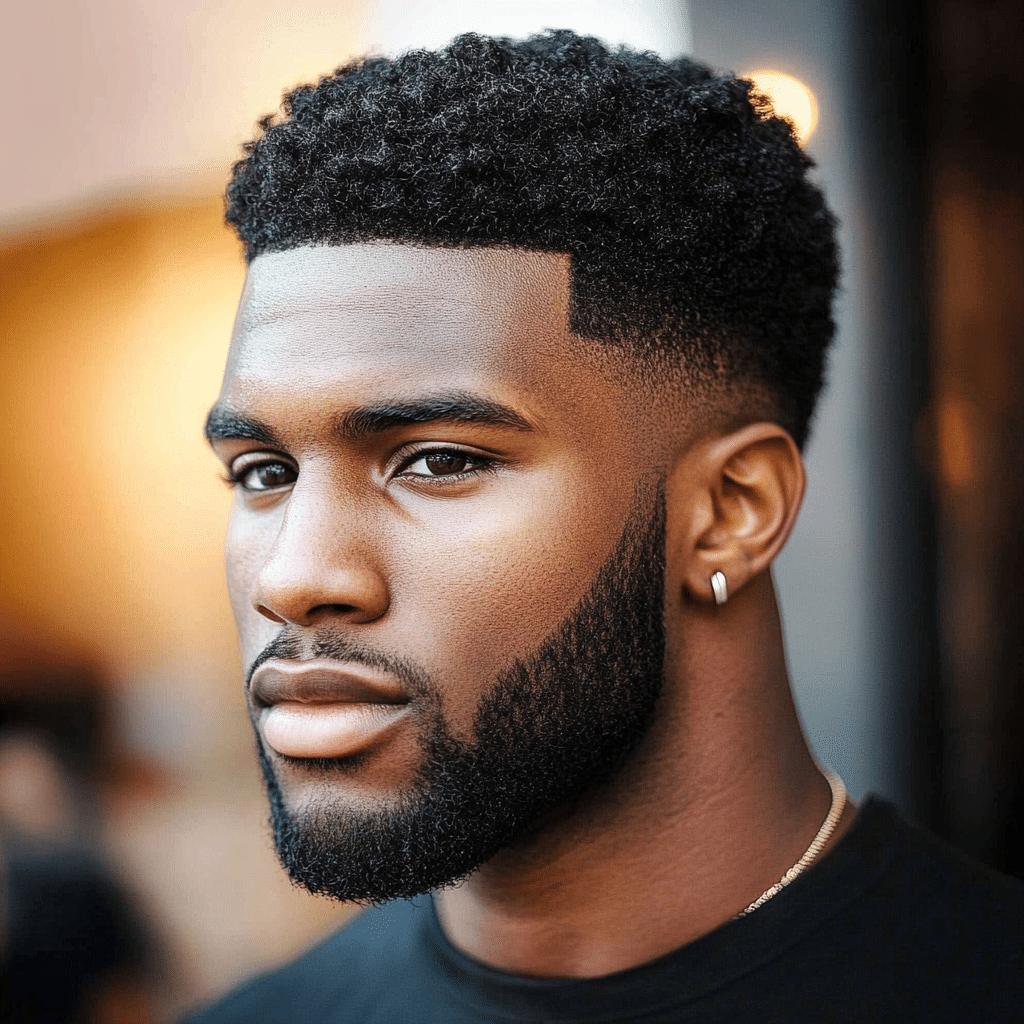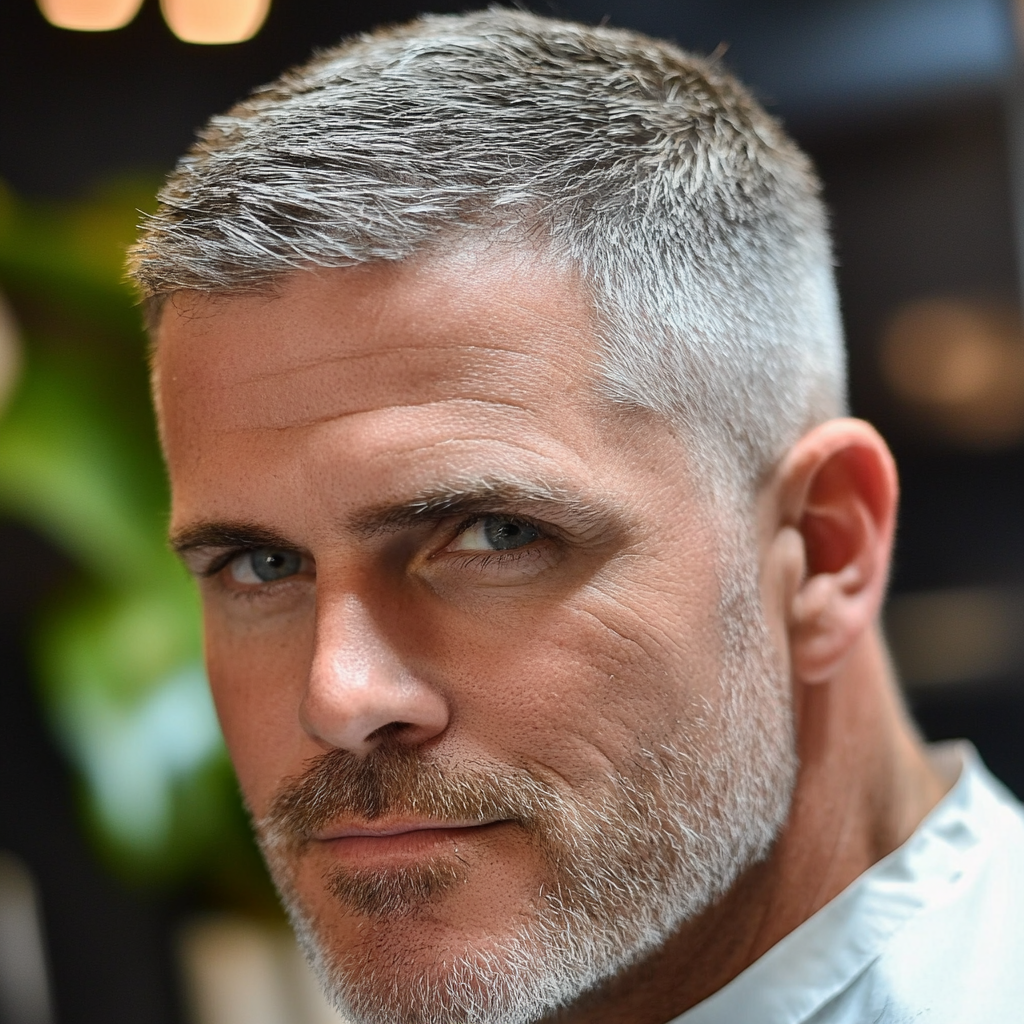The Scissor Fade | Men’s Haircuts
The scissor fade emerges as a masterpiece of meticulous craftsmanship and refined style. Unlike its counterpart, the clipper fade, which relies on electric clippers for a sharp gradient effect, the scissor fade is a testament to the artistry of handcrafted men’s haircuts. With shears as their tools, skilled barbers sculpt seamless transitions between lengths, creating a look that epitomizes timeless elegance and understated sophistication.
The Artistry Behind the Scissor Fade Men’s Haircuts
Crafting a flawless scissor fade requires a delicate balance of technique and intuition. Unlike the clipper fade or classic fade or taper haircut, which adheres to predetermined guard lengths, the scissor fade is a freehand process. This allows barbers to adapt the cut to each client’s unique hair texture, density, and desired style, resulting in a bespoke look that celebrates individuality.
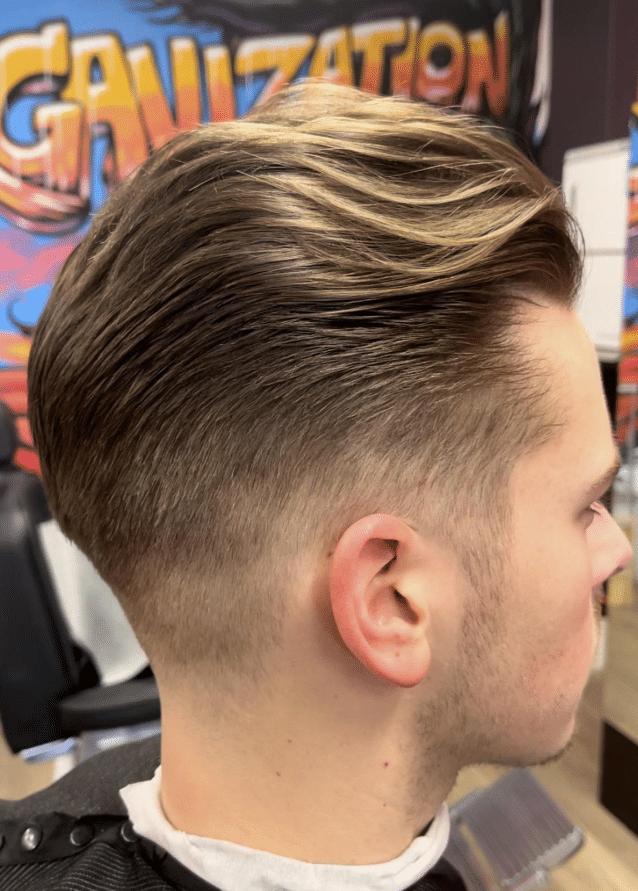
With precision cutting techniques, barbers meticulously blend the hair, gradually transitioning from longer lengths at the top to shorter lengths towards the neckline. The result is a seamless gradient that appears effortlessly natural, showcasing the barber’s skill and attention to detail.
Versatility and Personalization
The scissor fade is celebrated for its versatility and adaptability. Whether paired with a classic side part, a textured quiff, or a modern pompadour, this haircut seamlessly integrates with a variety of styles, offering endless possibilities for personal expression. Moreover, the scissor fade is not constrained by specific hair types or lengths. From fine, straight hair to thick, curly locks, it can be tailored to enhance the natural characteristics of any hair texture, adding depth and dimension to the overall look.
Embracing Subtle Sophistication
What sets the scissor fade apart is its understated elegance. Unlike hairstyles that draw attention with bold lines or dramatic contrasts, the scissor fade exudes a quiet confidence that speaks volumes without saying a word. Its refined appearance is characterized by soft transitions and clean lines, evoking a sense of timeless sophistication that transcends fleeting trends.
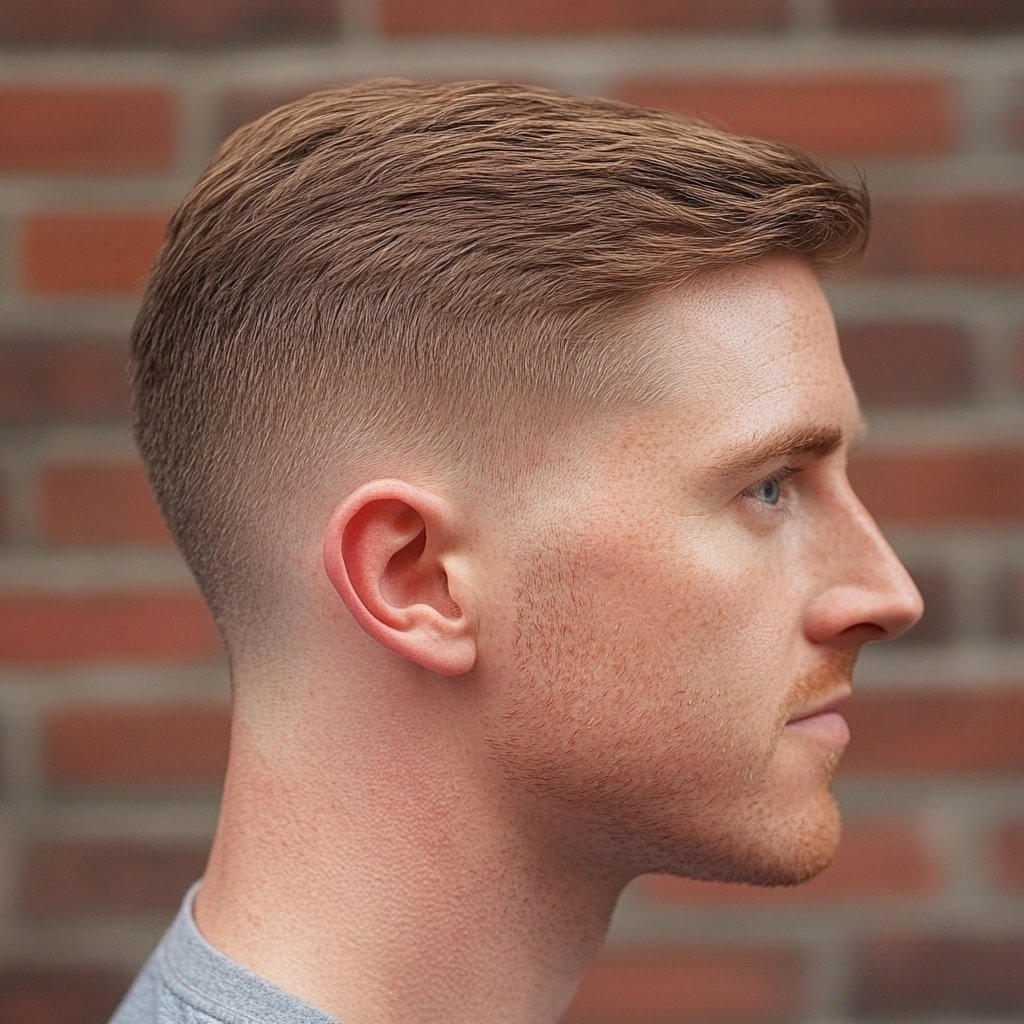
Maintenance and Care
While the scissor fade offers a polished and refined look, maintaining its pristine appearance requires regular upkeep. Barbers typically recommend scheduling appointments every few weeks to ensure the fade remains sharp and well-defined. Additionally, investing in quality hair care products, such as styling creams or pomades, can help maintain the shape and texture of the hairstyle between visits to the barber.
Watch this Scissor Only Haircut by Andrea Amighetti
Timeless Craftsmanship, Modern Appeal
In a world where trends come and go, the scissor fade stands as a timeless symbol of craftsmanship and refinement. From its meticulous construction to its versatile adaptability, the scissor fade embodies the artistry and elegance of traditional barbering, appealing to individuals who appreciate understated sophistication and attention to detail.
Whether worn in a professional setting or a casual environment, the scissor fade exudes a sense of confidence and refinement that transcends passing fads. As men continue to prioritize grooming and self-care, the scissor fade remains a steadfast choice for those who value quality, precision, and timeless style. In a world where less is often more, the scissor fade proves that sometimes on men’s haircuts, the most powerful statements are made with subtle elegance.
Different Types of Fade Hairstyles for Men:
- Low Fade: The hair gradually tapers down starting from above the ears and neckline, creating a subtle transition.
- High Fade: The fade starts high on the sides and back of the head, typically above the temples, resulting in a more dramatic contrast between the longer hair on top and the shorter faded sides.
- Mid Fade: Positioned between the low and high fade, the mid fade starts midway up the sides and back of the head, offering a balanced look that blends seamlessly with the longer hair on top.
- Skin Fade: Also known as a bald fade, the hair is faded down to the skin, creating a sharp and defined contrast between the longer hair on top and the shaved sides and back.
- Drop Fade: The fade gradually descends from the top of the head down to the neckline, following the natural curve of the head and creating a subtle “dropping” effect towards the back.
- Temp Fade (Temple Fade): The fade is concentrated around the temples and sideburns, gradually tapering the hair in those areas while maintaining length and volume on top.
- Burst Fade: Characterized by a rounded or oval shape around the ears, the burst fade adds a unique and stylish element to the traditional fade haircut.
- Taper Fade: Unlike a traditional fade, the taper fade gradually decreases in length as it moves towards the neckline, offering a more subtle and gradual transition.
- Razor Fade: This distinct variation of the fade involves using a razor to create clean, sharp lines and precise transitions between different lengths of hair. The razor fade offers a sleek and modern look, emphasizing defined edges and a polished finish. It’s characterized by its sharp and angular appearance, creating a bold statement hairstyle for those seeking a contemporary edge to their look.
- Comb Over Fade: The hair is faded on the sides and back while the longer hair on top is combed over to one side, creating a classic and sophisticated look.
